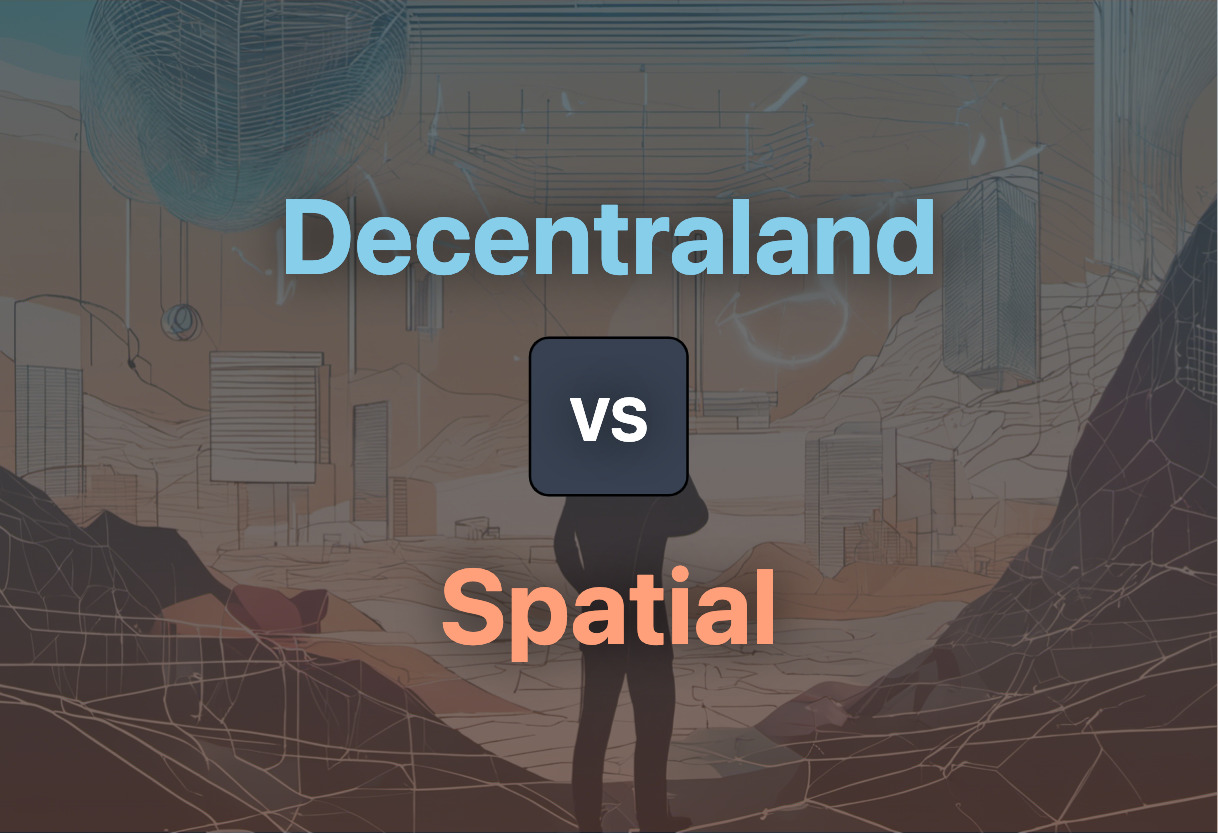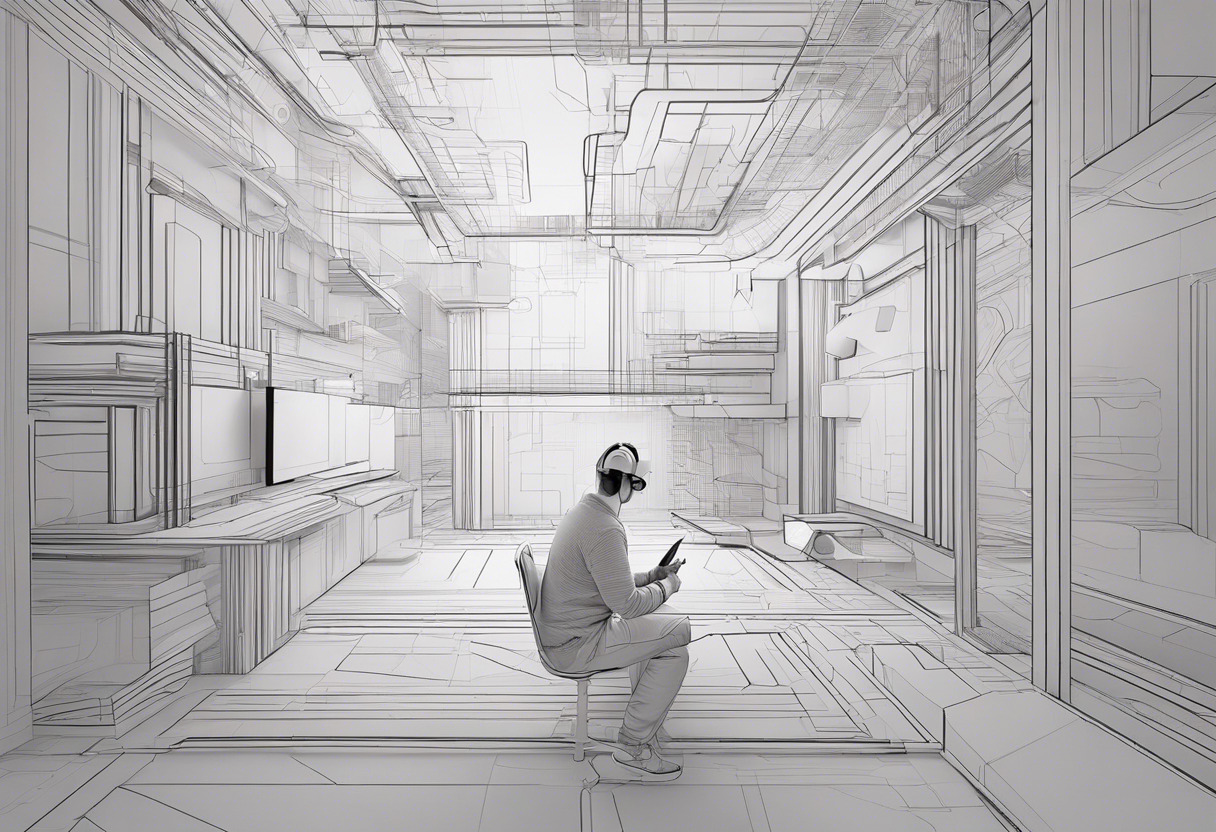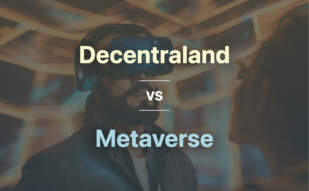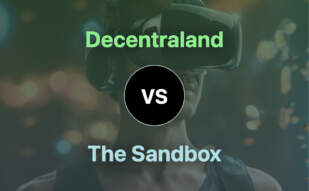Decentraland is the champion for creators seeking long-term immersion in a blockchain-backed metaverse, catalyzed by its native tokens and governance model, and bolstered by real-estate opportunities. For less-dense development with high emphasis on interaction, aesthetics, and ease, Spatial takes the cake with its cross-platform, AI-powered AR/VR experiences.

Key Distinctions: Decentraland & Spatial
- Economy: Decentraland features an in-world economy powered by four native tokens (LAND, MANA, Estate and Districts), thanks to Ethereum-based blockchain. Spatial does not have an analogous system.
- Development: Decentraland’s SDK allows creation of custom games and applications; Spatial features Unity integration for custom 3D spaces crafted from 2D photos.
- User Interaction: Both facilitate avatar-based interactions, but Spatial has the added advantage of realistic renderings of avatars via AI and hand/eye gestures. Decentraland focuses on token-powered experiences.
- Access: Spatial is cross-platform and accommodates up to 30 participants for free. Decentraland demands Ethereum wallets for users to open accounts and handles transactions through Ethereum blockchain.
| Comparison | Decentraland | Spatial.io |
|---|---|---|
| Key Offering | 3D virtual world platform, Ethereum-based, user-controlled | Immersive AR/VR experiences for gaming and collaboration |
| Activities | Purchasing digital art, trading in Bartertown, learning at University, and exploring user-generated scenes | Design collaboration in 3D, personalized spaces creation, live shows |
| Smart Contract Capability | Yes, Ethereum based | No |
| Supported activities | Social activities, gaming, attending events, exploring user-generated scenes | Designing, 3D modeling, cross-platform collaboration, live shows |
| Integration | Ethereum cryptocurrency wallet | Google Drive, Microsoft 365, Slack, Figma |
| Platform Access | Updates primarily through Ethereum blockchain | Accessible via web browser, Android, and iOS |
What Is Decentraland Who’s It For?
Decentraland is a unique, ethereum-based, 3D virtual world platform exclusively owned and controlled by its user community. Created by Argentine professional duo Ari Meilich and Esteban Ordano in 2015, Decentraland offers its users a parallel economy facilitated by two primary tokens – LAND and MANA. It’s the perfect platform for those seeking a blend of virtual reality and blockchain tech, allowing avatar-based interactions, exploration, game creations, digital art purchases and much more.

Pros of Decentraland
- Ethereum-based platform with a parallel economy
- User governance through Decentraland DAO
- Options for monetizing created experiences
- Hosts engaging events and supports social activities
Cons of Decentraland
- Requires an Ethereum cryptocurrency wallet to open accounts
- Criticized for technical bugs
- Often perceived as an empty virtual world
- Less active users compared to traditional gaming platforms
What Is Spatial.io and Who’s It For?
Spatial.io is a revolutionary platform that creates immersive AR/VR experiences used primarily for gaming and collaboration. Equipped with robust features such as 3D templates, Sketchfab models, and avatar customization, Spatial.io caters to those who thrive in the intersection of creativity and tech. With brand partnerships ranging from Calvin Klein to Adidas and cross-platform availability, this platform is a powerhouse for 3D design collaboration and immersive experiences.

Pros of Spatial.io
- Offers immersive AR/VR experiences
- Expandable with 3D templates and Sketchfab models
- Enriched avatar customization opportunities
- Cross-platform accessibility and seamless integration with top-tier software
Cons of Spatial.io
- Limited to 30 participants in the free version
- Might face compatibility issues with less popular AR/VR devices
- Requires a significant bandwidth for optimal operation
- Can be complex to navigate for beginners in AR/VR tech
Decentraland vs Spatial – The Final Showdown
After a thorough exploration of both Decentraland and Spatial.io, the battle lines are drawn. Let’s dive into the specific audience segments and see where each should rightfully stake their allegiance.
Cryptocurrency Enthusiasts
Decentraland takes the cake for this segment. With an entrenched position in the Ethereum blockchain’s ecosystem, it offers a robust platform for those who enjoy the thrill of mingling cryptocurrency investment with entertainment. Native tokens, robust DAO governance, and a bustling virtual economy make it an irresistible attraction.

AR/VR Developers & Designers
For this highly technical audience, the versatility and integration features of Spatial.io are the deciding factors. The platform provides seamless integration with Unity and connectivity with coveted tools like Google Drive, Microsoft 365, and Slack. It’s the design sandbox for the pros.

Brand Promoters & Marketers
Ambitious marketers and brand promoters might find their realm in Decentraland. Virtual offices and galleries, interactive experiences from giants like Netflix, Doritos, and Samsung just scratch the surface of its commercial potential. Bold strategies can leverage the platform’s unique features for brand building and customer engagement.

Collaborative Creatives
Creativity, when shared, blossoms. For those inclined towards collaborative creation, Spatial.io presents a viable choice with support for vast 3D design collaboration. Add its cross-platform interoperability and crowd-favorite functionalities, we’ve got a real winner here.

In the clash between Decentraland and Spatial.io, the scales don’t lean definitively. Landowners with a flair for cryptocurrency and immersive experiences may find a veritable playground in Decentraland. Spatial.io, on the other hand, serves as a versatile tool for AR/VR developers and collaborative creators seeking a flexible and integrated workspace.
Tiffany Brise
Content writer @ Aircada, patiently awaiting a consumer AR headset that doesn’t suck.





